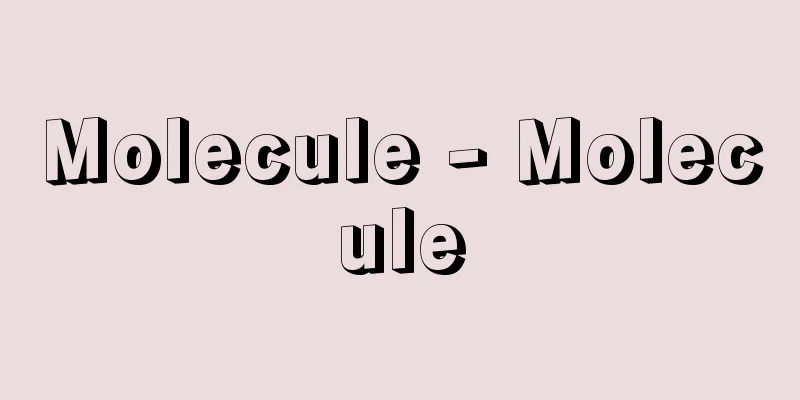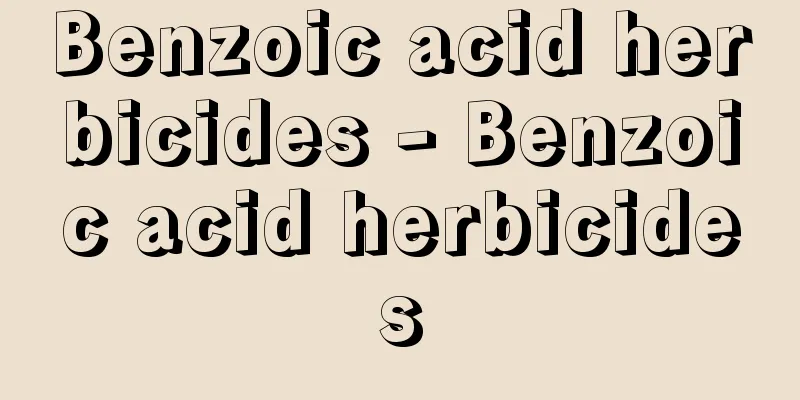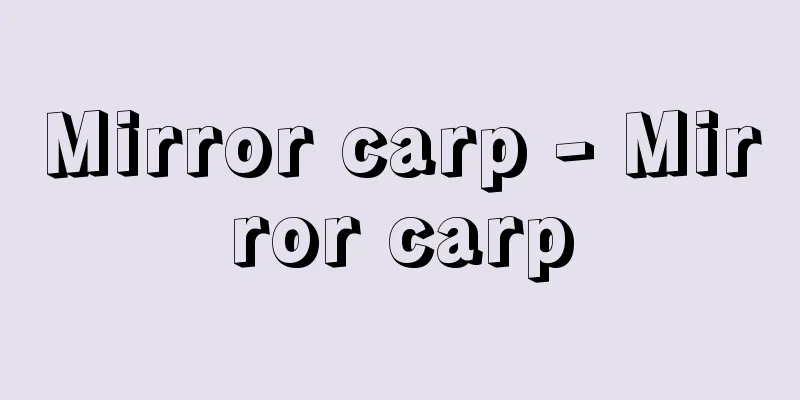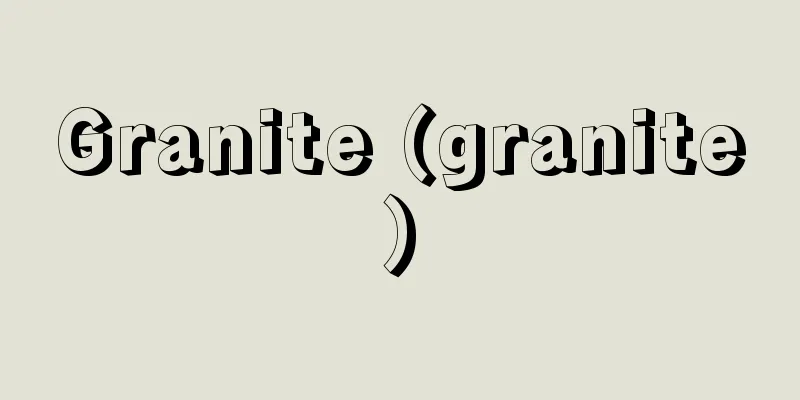Molecule - Molecule

|
The basic building blocks of matter formed by the combination of atoms. historyIn 1811, the Italian Avogadro argued against Dalton's atomic theory, which was widely accepted at the time, that simple hydrogen and oxygen do not consist of a single atom, and that the water molecule produced by the reaction of hydrogen and oxygen does not consist of a single hydrogen atom and a single oxygen atom. He proposed the hypothesis that hydrogen and oxygen each form molecules with two atoms bonded together, and that a water molecule is a combination of two hydrogen atoms and one oxygen atom. This was the first proposal for the modern molecular picture. The correctness of this hypothesis was finally supported by chemists at the First International Congress of Atomic Weights held in Karlsruhe, Germany in 1860, when Cannizzaro, a junior of Avogadro, made a strong argument. It was then that it became possible for the first time to calculate the correct values for atomic weights, and Mendeleev of Russia, who attended the conference, would later propose the Periodic Law of the Elements. Around the same time, Pasteur of France separated the optical isomers of tartrate, van't Hoff of the Netherlands and Le Bel of France investigated the relationship between the structure of the optical isomers of organic compounds and their optical rotatory power, proposing a structural model in which carbon atoms extend from the center of a regular tetrahedron toward the vertices, and Kekulé of Germany proposed that the benzene molecule has a ring structure of carbon atoms linked in a regular hexagon. Also, since most of the compounds known at that time had atomic compositions with simple integer ratios, it was thought that all substances were based on simple molecules. In the 20th century, the development of methods for determining molecular structure, including X-ray diffraction, made it possible to establish a correspondence between molecules (molar concepts) in thermodynamic quantities and actual molecules. As a result, it became clear that the molecules of ordinary pure substances are composed of a certain number of atoms of a certain type that can be accurately counted, and are formed in a certain bond order. The molecules conceived by Avogadro correspond to this, so this type of molecule is sometimes called an Avogadro molecule. In contrast, in ionic and metallic crystals, ionic and metallic bonds extend throughout the entire crystal, and there are no independent molecules consisting of a relatively small number of atoms. If we were to call them molecules, the entire crystal would constitute one giant molecule. Therefore, this type of molecule is sometimes called a giant molecule. On the other hand, it was not until the 1930s that it was widely recognized that polymers such as proteins and cellulose are polymers with extremely large molecular weights and are not simply aggregates of monomeric molecules that are their constituent parts. Although the term "polymer" is primarily used for organic substances and "giant molecule" is primarily used for inorganic substances, there is no essential difference between the two. [Iwamoto Shinbu] Expanding the concept of moleculesIn the narrow sense, a molecule is an electrically neutral chemical species consisting of multiple atoms, but when discussing molecular motion and molecular structure, it often includes atoms and ions. In the kinetic theory of gases, the simplest molecule is a monoatomic molecule with no contribution of molecular rotation or intramolecular vibration. In reality, the molecules of the noble gases correspond to this. There is no essential difference between the structure of polyatomic ions such as sulfate ions and complex ions and molecular structures, except for the presence or absence of charge. For example, the tetrahydroborate ion BH 4 - , methane CH 4 , and ammonium ion NH 4 + all have a regular tetrahedral molecular structure. In an electrolyte solution, each ion behaves as an independent chemical species and can be treated as a molecule with a charge. The amount of a substance derived from the concept of moles is one of the basic units in physics and chemistry, and is indicated by the unit name mole and the unit symbol mol. A mole is a quantity of material that contains the same number of particles as 0.012 kilograms of 12C (carbon atom with mass number 12), but it is a group of Avogadro's constant number of particles, whether they are molecules, ions, atoms, or other elementary particles. In treating the thermodynamic quantities per mole, there is little distinction between molecules, atoms, and ions. [Iwamoto Shinbu] Molecular structureThe simplest molecules are monatomic molecules, and examples of these are rare gas molecules. Diatomic molecules are linear, and there are many examples such as hydrogen, nitrogen, oxygen, and chlorine. Triatomic molecules such as carbon dioxide (CO 2 ) are linear, while water molecules (H 2 O) are V-shaped. Ammonia (NH 3 ) is a triangular pyramid with nitrogen atoms at the vertices, while phosphorus molecules (P 4 ) are tetrahedral with each phosphorus atom at a vertex. The ammonia pyramid is also tetrahedral, but not tetrahedral. In BH 4 - , CH 4 , and NH 4 + , the B, C, and N atoms are located at the center of the tetrahedron, and H atoms are located at each vertex. The complex ion [CoCl 4 ] 2- is also tetrahedral, but [Ni(CN) 4 ] 2- is a square planar ion. Both the hexacyanoferrate(III) ion [Fe(CN) 6 ] 3- and sulfur hexafluoride (SF 6 ) are regular octahedral. The dodecaborate(12) ion B 12 H 12 2- has a highly symmetric structure, with B atoms occupying each vertex of the regular icosahedron and H atoms located on the extensions of the lines connecting the vertices from the center. [Iwamoto Shinbu] Molecular AssemblyIn natural chemistry, the methodology generally adopted is to carry out precise experiments using substances that are as purified as possible, and to explain the results theoretically using models that are as simplified as possible. This tendency is particularly prominent in physics and chemistry. However, many naturally occurring substances and artificially synthesized materials are by no means simple substances, but are aggregates of various chemical species (molecules, atoms, ions, etc.). It is believed that understanding them is possible by accurately grasping and integrating information about individual molecules, and the physics and chemistry of molecular assemblies is a research topic that is expected to see further development in the future. [Iwamoto Shinbu] "Molecular Assembly - Its Organization and Function" edited by the Chemical Society of Japan (1983, Society Publication Center) [Reference] | | |The following will be described in the order of molecule shape/number of electron pairs/number of lone electron pairs/examples. (1) Linear / 2 / 0 / CO (2) Triangular / 3 / 0 / BCl, BF (3) V-shaped / 3 / 1 / SnCl (gas) (4) Tetrahedral / 4 / 0 / CH (5) Triangular pyramid / 4 / 1 / NH (6) V-shaped / 4 / 2 / HO (7) Trigonal bipyramid / 5 / 0 / PCl (8) Strain Tetrahedral shape / 5/1 / TeCl (9) T shape / 5 / 2 / ClF (10) linear / 5 / 3 / ICl (11) octahedral / 6 / 0 / SF (12) square pyramid / 6 / 1 / IF (13) square plane (square) / 6 / 2 / ICl (14) pentagonal pyramid / 7 / 0 / IF ©Shogakukan "> Molecular Shape Source: Shogakukan Encyclopedia Nipponica About Encyclopedia Nipponica Information | Legend |
|
原子が結合して生成した物質の基本構成単位。 歴史1811年イタリアのアボガドロは、当時広く認められるようになったドルトンの原子説に対し、水素や酸素の単体が原子1個からなるのではなく、水素と酸素が反応して生じた水の分子も、水素原子1個と酸素原子1個からなるのではないことを主張し、水素、酸素はそれぞれ2個の原子が結合した分子をつくり、水の分子は水素原子2個と酸素原子1個が結合したものであるとの仮説を提出した。これが現代の分子像の最初の提案である。その仮説の正しいことは、1860年ドイツのカールスルーエで開かれた第1回万国原子量会議でアボガドロの後輩にあたるカニッツァーロの力説によって、ようやく化学者たちの支持を受けるようになった。そこで初めて原子量の正しい数値の算出が可能となり、この会議に出席していたロシアのメンデレーエフが、のちに元素の周期律を提出することになるのである。 同じころ、フランスのパスツールは酒石酸塩の光学異性体を分割し、オランダのファント・ホッフとフランスのル・ベルは有機化合物の光学異性体の構造と旋光能との関係を調べて、炭素が正四面体の中心から頂点の方向に結合の手を伸ばしている構造モデルを提案し、ドイツのケクレはベンゼン分子が正六角形に連結した炭素原子の環状構造をもつことを提案した。また、当時知られていた化合物のほとんどが簡単な整数比となる原子組成をもっていたため、すべての物質が単純な分子を基本単位としているとも考えられていた。 20世紀に入り、X線回折法をはじめとする分子構造の決定法が発達し、熱力学的な諸量における分子(モル概念)と実際の分子との対応もつけられるようになった。その結果、通常の純物質の分子は一定種類の原子がそれぞれ正確に勘定できる一定個数だけ集合し、一定の結合順序によって構成されたものであることが明らかとなった。アボガドロが考えた分子はこれに相当するので、この種の分子をアボガドロ分子ということがある。これに対し、イオン結晶や金属結晶では、イオン結合や金属結合が結晶全体に及んでおり、比較的少数の原子からなる独立した分子は存在せず、あえて分子というならば、結晶全体が一つの巨大な分子を構成していることになる。そこで、この種の分子を巨大分子ということがある。 一方、タンパク質やセルロースなどの高分子がきわめて分子量の大きな重合体であり、構成要素である単量体分子の単なる集合体ではないことが広く認められたのは1930年代のことであった。高分子は主として有機系、巨大分子は主として無機系の物質に使われる用語であるが、両者の間に本質的な差はない。 [岩本振武] 分子概念の拡張狭義の分子は複数の原子からなる電気的に中性な化学種であるが、分子運動や分子構造を論ずるときには原子やイオンを含むことも多い。気体分子運動論におけるもっとも簡単な分子は、分子回転や分子内での振動の寄与がない単原子分子である。現実には、希ガスの分子がこれに相当する。硫酸イオンのような多原子イオンや錯イオンの構造と分子構造との間には、電荷の有無を除けば本質的な差はない。たとえば、テトラヒドロホウ酸イオンBH4-、メタンCH4、アンモニウムイオンNH4+は、いずれも正四面体型の分子構造をもつ。電解質水溶液では、各イオンはそれぞれ独立した化学種として挙動し、電荷をもつ分子として扱うことができる。モル概念から誘導された物質(の)量は、物理・化学における基本単位の一つであり、単位名称はモル、単位記号molで示される。12C(質量数12の炭素原子)の0.012キログラムと同数の粒子を含む物質の量が1モルであるが、分子、イオン、原子、その他の基本的粒子のいずれであるかを問わず、アボガドロ定数個の集団が1モルとなる。1モル当りの熱力学的諸量の取扱いにおいても、分子、原子、イオンに対する区別はほとんどない。 [岩本振武] 分子構造もっとも簡単な構造をもつ分子は単原子分子であり、希ガス分子がその例となる。二原子分子は直線状であり、水素、窒素、酸素、塩素などその例は多い。三原子分子の二酸化炭素CO2は直線状であるが、水分子H2OはV字状である。アンモニアNH3は窒素原子を頂点とする三角錐(すい)の形となるが、リンの分子P4は各リン原子が頂点となる正四面体形である。アンモニア分子の三角錐も四面体形ではあるが、正四面体形ではない。BH4-,CH4,NH4+では、正四面体の中心にB、C、Nの各原子が位置し、各頂点にH原子が位置する。錯イオン[CoCl4]2-も正四面体形であるが、[Ni(CN)4]2-は正方平面形である。ヘキサシアノ鉄(Ⅲ)酸イオン[Fe(CN)6]3-も六フッ化硫黄(いおう)SF6もともに正八面体形である。ドデカボラン(12)酸イオンB12H122-は正二十面体の各頂点をB原子が占め、中心から頂点を結んだ線の延長上にH原子が位置する対称性の高い構造をもつ。 [岩本振武] 分子集合体自然化学においては、なるべく精製された物質を用いて精密な実験を行い、その結果をなるべく単純化されたモデルによって理論的に説明する方法論が一般に採用されている。物理学、化学にとくにその傾向が著しい。しかし、天然に存在する物質系や人工的に合成される材料物質の多くはけっして単純な物質種ではなく、さまざまな化学種(分子、原子、イオンなど)が集合したものである。それらの理解は個々の分子に関する情報を正確に把握し、総合することによって可能となるとされており、分子集合体の物理・化学は今後の発展が期待される研究課題となっている。 [岩本振武] 『日本化学会編『分子集合体――その組織化と機能』(1983・学会出版センター)』 [参照項目] | | |以下、分子の形/電子対の数/孤立電子対の数/例の順に記す。(1)直線状/2/0/CO(2)三角形/3/0/BCl、BF(3)V形/3/1/SnCl(気体)(4)正四面体形/4/0/CH(5)三角錐形/4/1/NH(6)V形/4/2/HO(7)三方両錐形/5/0/PCl(8)ひずんだ四面体形/5/1/TeCl(9)T形/5/2/ClF(10)直線形/5/3/ICl(11)正八面体形/6/0/SF(12)正方錐形/6/1/IF(13)正方平面形(正方形)/6/2/ICl(14)五面錐形/7/0/IF©Shogakukan"> 分子の形 出典 小学館 日本大百科全書(ニッポニカ)日本大百科全書(ニッポニカ)について 情報 | 凡例 |
<<: Molecular science - bunshikagaku (English spelling) molecular science
Recommend
Extender pigment - Extender pigment
A white pigment that has a low refractive index, ...
Round neck - Enshu
Human head, person. See the entry for "en&quo...
Oghuz Khan - Oghuz Khan
…A legend, tale, or heroic epic poem passed down ...
vaquería (English spelling) vaqueria
…The Spanish introduced horses and cattle to the ...
voluntary muscle
…the former is called voluntary movement, the lat...
Michael Addition - Michael Fuca
Also known as Michael addition. A reaction in whi...
Shomyoji Temple
A Shingon Buddhist temple in Kanazawa-cho, Kanazaw...
tall fescue (English spelling)
…Many of them are used as important pasture or tu...
Bandai [town] - Bandai
A town in Yama County in the mid-west of Fukushima...
Westerly winds
An air current that flows from west to east, alth...
breviary
...Hourly prayer (properly speaking, hourly praye...
Yoshikichi Uchiyama
...Since 1929, Uchiyama Bookstore, located on Nor...
Sea Wanderers
〘noun〙 People who live on a boat and make a living...
Falco tinnunculus (English spelling)
…A species of bird in the Falconidae family, or a...
Gustav V
1855‐1950 King of Sweden. Reigned 1907-50. Parliam...









